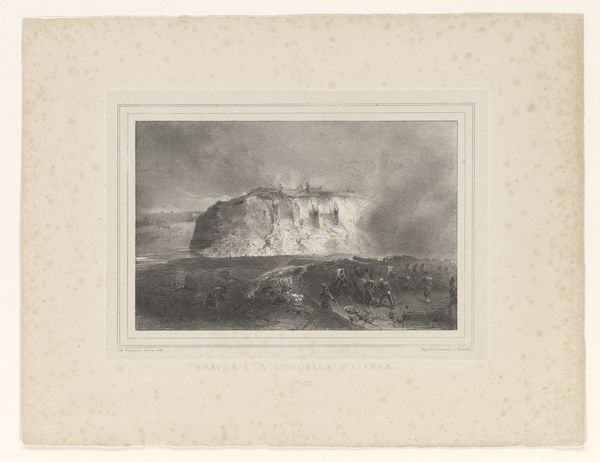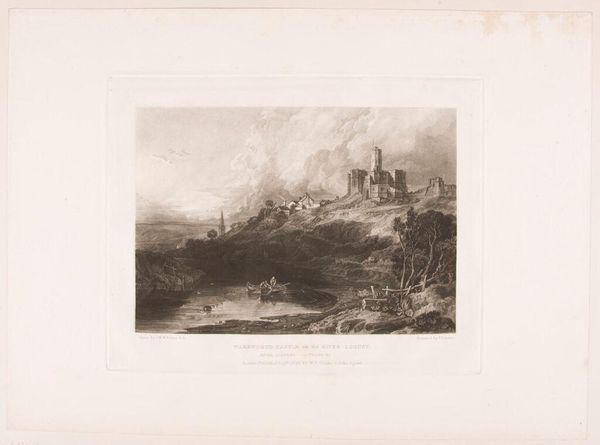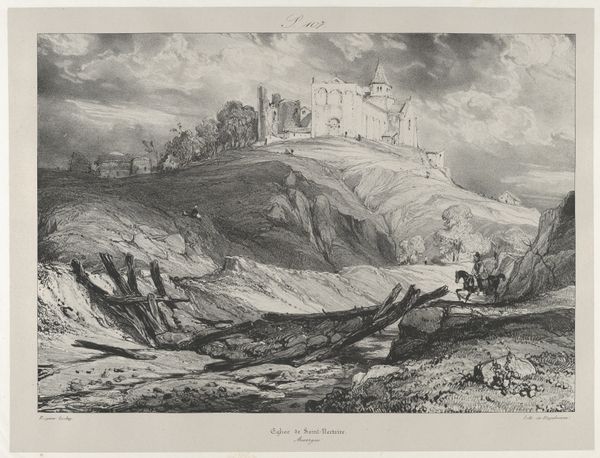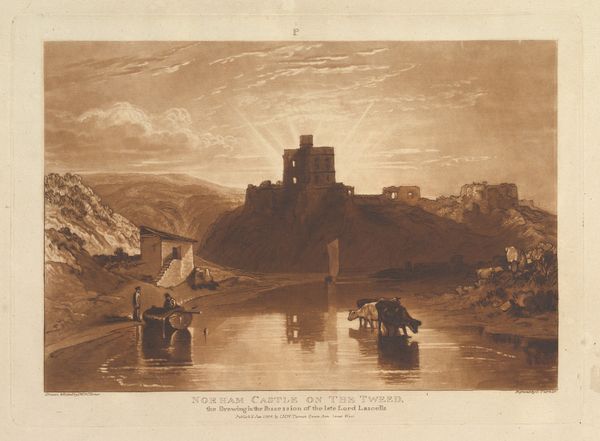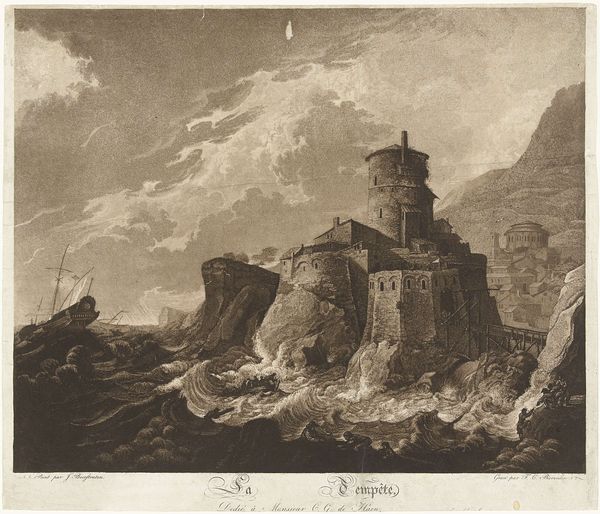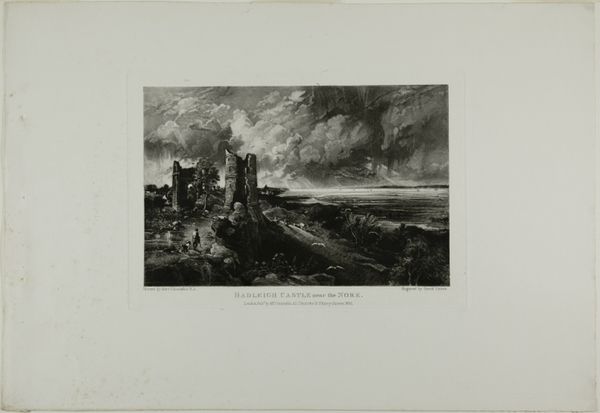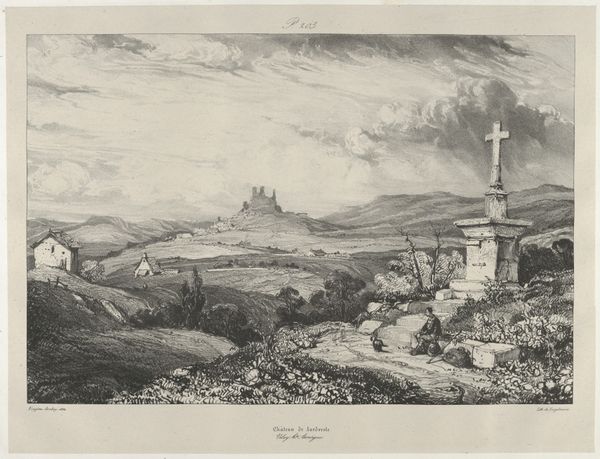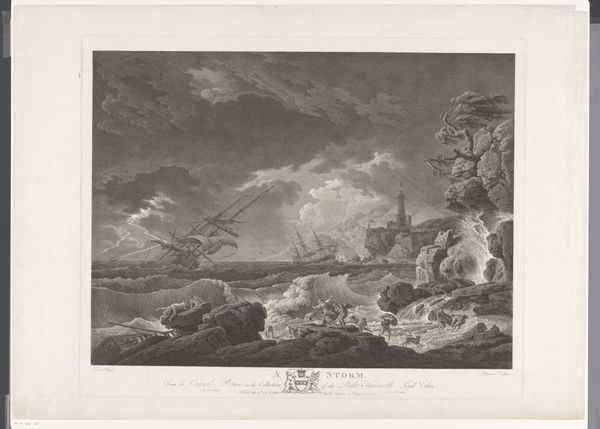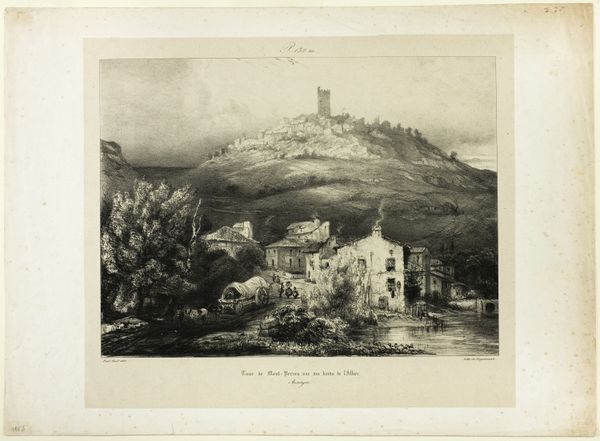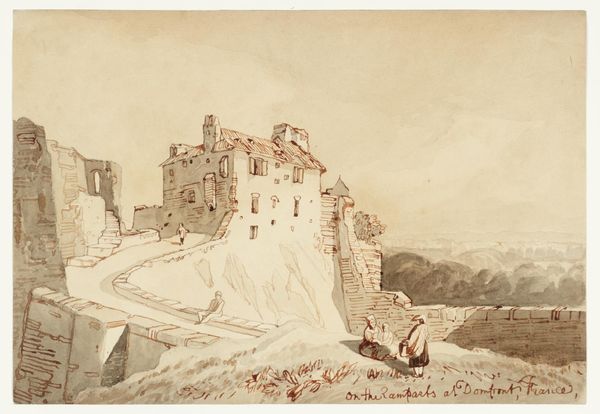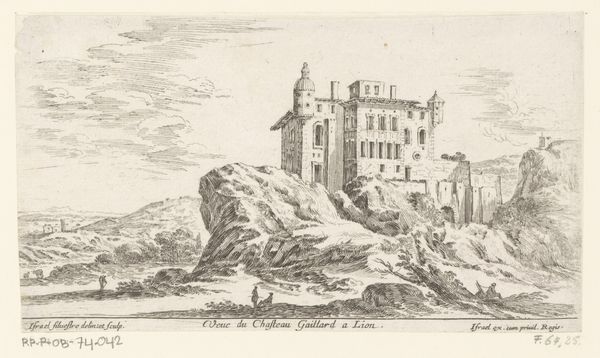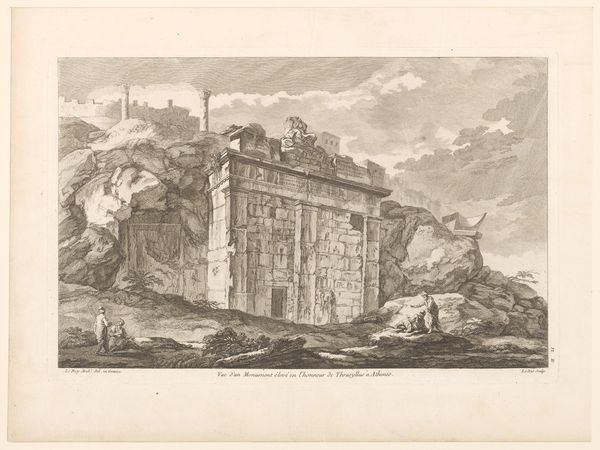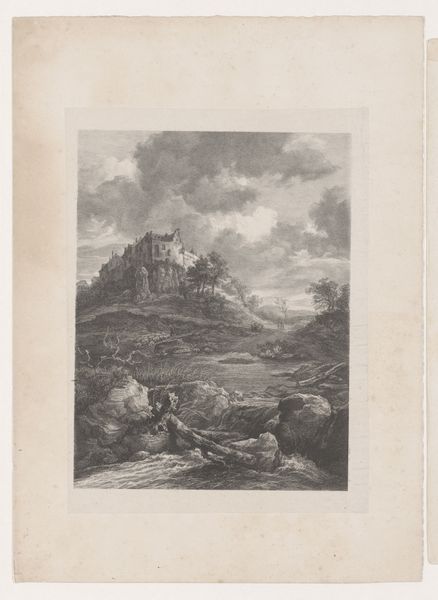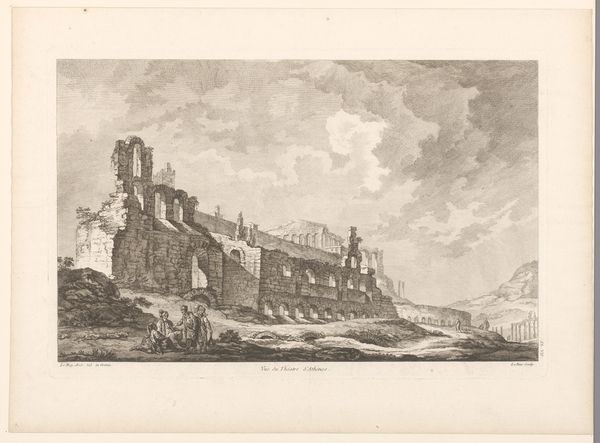
drawing, print, etching, pencil
#
pencil drawn
#
drawing
# print
#
etching
#
pencil sketch
#
landscape
#
pencil drawing
#
romanticism
#
pencil
#
line
#
cityscape
#
realism
Dimensions: Sheet: 14 9/16 × 21 9/16 in. (37 × 54.8 cm) Image: 8 11/16 × 12 3/16 in. (22 × 31 cm)
Copyright: Public Domain
Curator: This etching from 1830 by Eugène Isabey captures Pont-Gibaud Castle in all its Romantic glory. The work resides here at the Metropolitan Museum of Art in New York. What are your first impressions? Editor: Gloomy. Foreboding. The tonal range is tight, mostly grey, heightening that feeling. Look how Isabey uses the dense hatching in the sky to weigh down the castle. Curator: Absolutely. This was the time of industrial expansion; social upheaval prompted a retreat back into more romantic notions. Etchings such as this were commercially reproduced and sold widely, making images like this available to a new consumer base. Editor: Note the expert employment of line. It is far from simple documentation. He captures textures – the rough stone, the grassy hill – almost perfectly. Curator: Think of the etching process itself. The artist incising lines into a wax-covered metal plate with a needle, submerging the plate in acid to bite the lines, then printing multiple impressions. It's labor-intensive, yet it was crucial in disseminating Romantic imagery, turning views of sublime nature and imposing architecture into a commodity for the rising bourgeoisie. Editor: Notice also, however, how those very precise lines contrast with the more fluid lines that constitute the sky. He knew how to give depth and scale by altering the composition's formal qualities. Curator: I'd add that such widely distributed prints helped normalize the lifestyle and aesthetic preferences of those in power. Landscapes dotted with castles weren't just picturesque; they reflected the established social order that these people benefitted from, reinforcing certain ways of thinking about history and place. Editor: You're right, of course, the image would have had social significance for the contemporary viewer. The etching remains a work of technical ingenuity, capturing something of the aura of the Romantic movement in monochrome, more than serving solely as documentation. Curator: An excellent point; let’s appreciate how the landscape connects directly with its socio-political context, allowing an opportunity to scrutinize it for how it has been received, consumed, and still reverberates today. Editor: Yes, precisely; it's about line, form, and texture uniting perfectly within its period of material consumption and social ideals, something we will appreciate equally today.
Comments
No comments
Be the first to comment and join the conversation on the ultimate creative platform.
